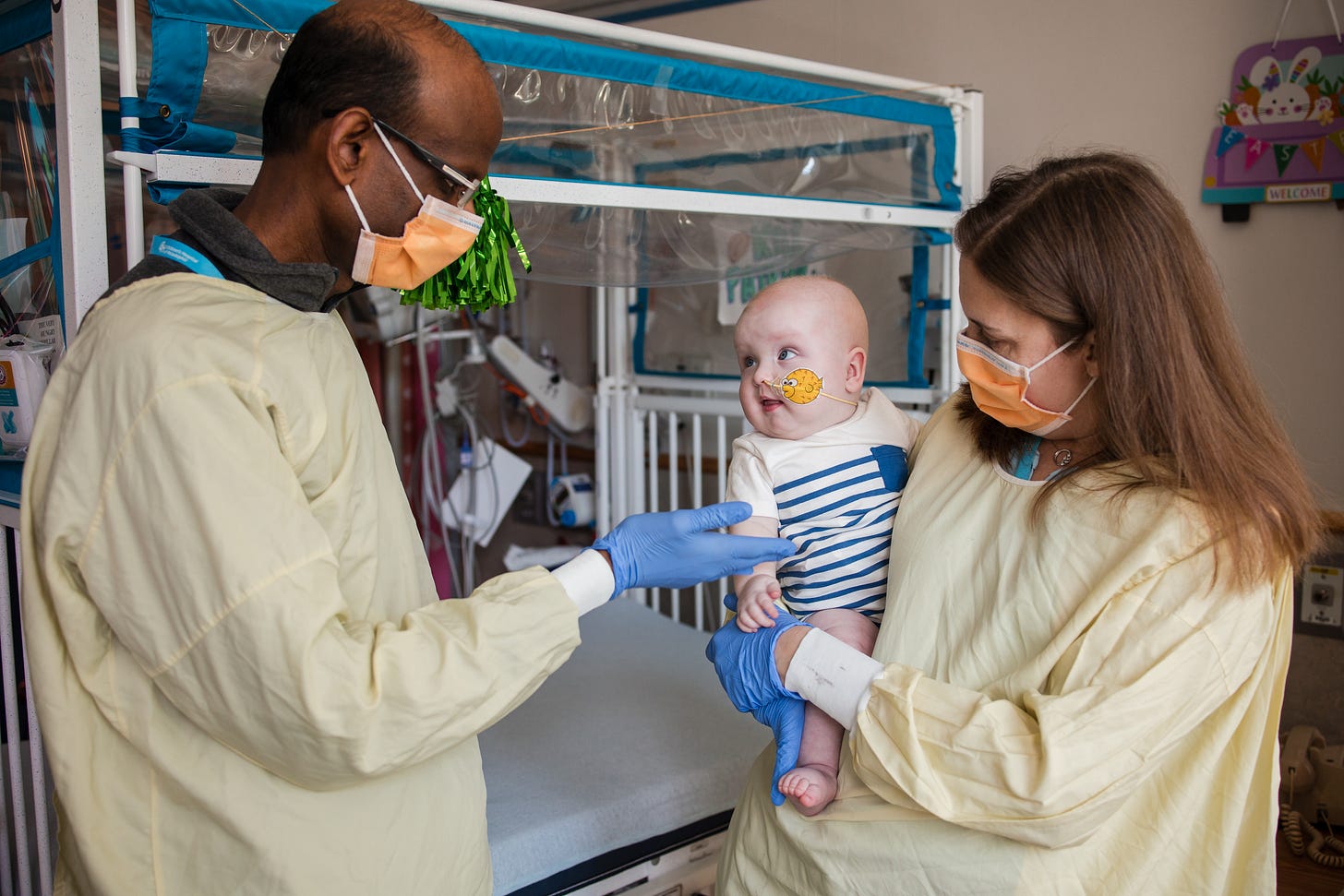The New Gene Therapy Playbook
How we got to Baby KJ and where we're going
Two days after his birth, KJ Muldoon was barely eating. His body went limp. His temperature was oscillating wildly. Blood tests revealed ammonia levels thirty times above normal. If this went on much longer, KJ’s doctors knew, he could end up in a coma — or die.
KJ had a rare and debilitating metabolic disorder known as carbamoyl-phosphate synthase 1 (CPS1) deficiency, meaning he had a mutation in a gene that produced an enzyme critical for removing ammonia from the body. One of the doctors enlisted to come up with a solution, Kiran Musunuru, a cardiologist and geneticist at the University of Pennsylvania and the Children’s Hospital of Philadelphia (CHOP), knew a new gene-editing technology that would be perfect for fixing the broken gene. The technology was in early stage clinical trials around the country, but it had not yet proved its worth. Musunuru soon reached out to its inventor, David Liu at the Broad Institute, and asked if he was on board to help build out an individualized therapy for KJ before it was too late.
The case, which was described in the New England Journal of Medicine this past May, would require customizing this new gene-editing technology — called a base editor — proving it would be safe in the child, and deploying it with unprecedented speed and precision. Nicole Paulk, a gene therapy expert at University of California at San Francisco, says that this study represents, “the moment when the promise of personalized gene therapy finally crystallized.”

It was a moment years in the making. Over the previous two years, Musunuru and his colleague Rebecca Ahrens-Nicklas, a pediatrician-scientist at CHOP, had been running what they call “time trials” – practice rounds developing strategies to develop therapies for gene targets linked to metabolic cycle disorders like KJ’s in real-time. Their strategy required combining the right gene editing technology with a separate string of nucleic acids that coordinate the exact landing site for the editor. These were then wrapped up in a highly engineered droplet of fat — the lipid nanoparticles that proved their mettle in the mRNA vaccines during the COVID-19 pandemic – to carry everything into liver cells.
During initial test runs, the whole shebang from design to rollout took a year and a half to complete — too slow to help desperate patients on the fly. But with each “time trial,” they shaved off critical months. By the summer of 2024, they had compressed the timeline to several months, just in time for KJ’s arrival.
After getting approval from the family, the team synthesized a genetic cassette containing KJ’s specific mutation and inserted it into human liver cells grown in a dish to create a model system with the same exact genotype driving KJ’s disease. While those baked, the team got to work trying to pick the right gene editor, which is where David Liu comes in.
Keep reading with a 7-day free trial
Subscribe to Core Memory to keep reading this post and get 7 days of free access to the full post archives.



